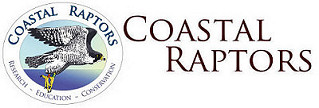
Dale Larson photo.
Our raptor Surveying and Banding research has been ongoing since 1995. In the ensuing 29 years, we’ve captured 244 Peregrine Falcons, fitting each with a visual identification leg band.
As we approach these falcons in our vehicle for banding or resighting, the degree of wariness they show ranges from extremely skittish to very approachable. Our favorites are the easy-going types, those Friendly Falcons.
These birds make our work easier: easier to capture and, once in hand, easier to handle (though they will bite given the chance!). After release, the demeanor of these Friendly Falcons doesn’t change. They allow close approach for band code reading by spotting scope or camera with telephoto lens. Below you will find information on two of our most Friendly Falcons, banded two decades and one year apart on the Ocean Shores beach.
Peregrine Falcon 4/D, 1997-2004
4/D was banded as a first-year female on February 2, 1997 at Ocean Shores. In years that followed 4/D showed fidelity to the Ocean Shores beach, having been resighted there 70 times in seven years (fall to spring).
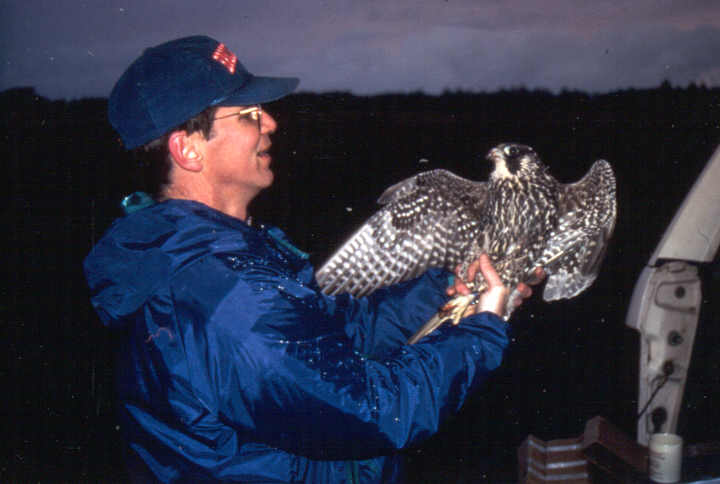
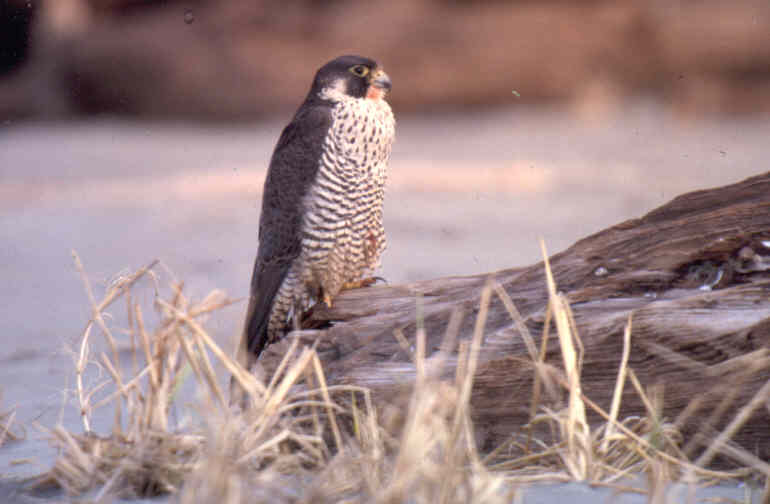
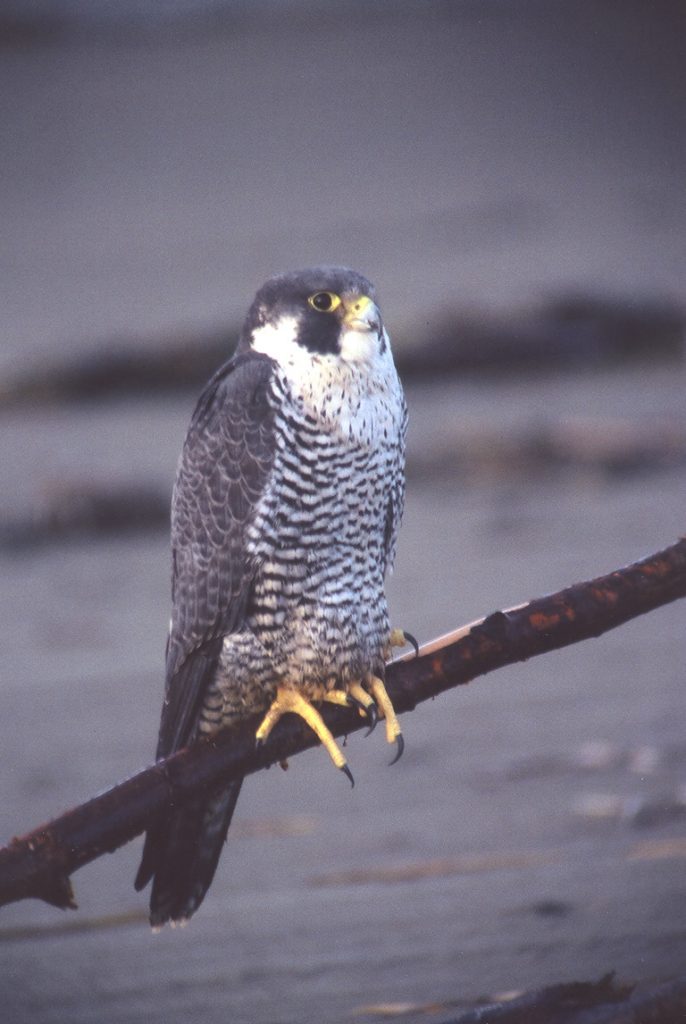
Dan Varland photo ca 2000.

Peregrine Falcon 35/B, 2018-2023
35/B was banded on October 30, 2018 at Ocean Shores. Like 4/D, she was less one of age at the time. And like 4/D, she exhibited fidelity to the Ocean Shores beach, having been resighted there 108 times. 35/B was five years old at her last resighting, January 31, 2023.


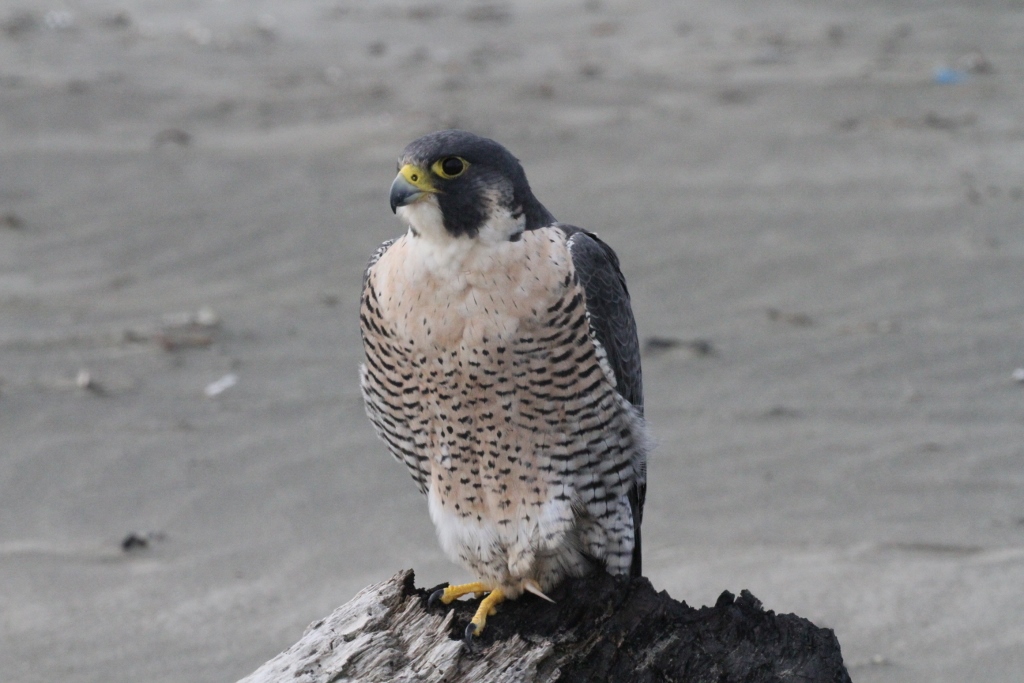
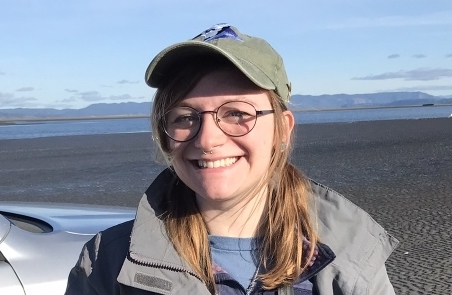
Photographers also appreciate Friendly Falcons! Friendly falcons perch comfortably for photos and tend to show site fidelity, making them easier to locate again and again.
Below is an awesome photo of 35/B taken by California photographer and videographer Nick Dunlop. Nick has visited our study area beaches many times during the fall months, seeking out and often finding our Friendliest Falcons. Nick aptly describes them this way: “Tame as Cats!”

Note: If you would like to see more of my Blog posts on Peregrine Falcons, click on Pacific Coast Peregrines below.
